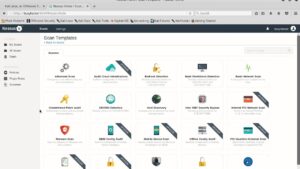How to Use Nessus to Scan a Network For Vulnerabilities
Scan a Network For Vulnerabilities
When it comes to scanning your network for security vulnerabilities, one of the best free tools available is Nessus. It’s a web-based application that runs on Windows, Mac, and Linux systems. In addition to scanning networks, it also detects vulnerabilities and suggests mitigation methods for them.
You can configure your scanner to scan for specific network vulnerability scans or check for vulnerabilities in specific locations or applications. You can also group these vulnerabilities by OS, application, or device. Depending on your needs, you can disable or enable certain plugins. This can improve the speed of your scanner and reduce false positives. Remember to always update the plug-ins daily so that they work properly.

If you are not sure about the security of your network, you can always hire a security professional to do the job. These professionals can conduct a vulnerability scan on your network and identify any vulnerable computers. Attacks such as HeartBleed and WannaCry leverage existing vulnerabilities in Windows OS. By identifying these weaknesses, you can work with an IT administrator to resolve them.
How to Use Nessus to Scan a Network For Vulnerabilities
Despite the benefits of vulnerability scanning, organizations struggle to enforce their security policies. In order to properly enforce security policies, IT departments must get executive approval for vulnerability scanning and organizational changes. Without executive support, a business would have to spend a significant amount of time trying to repair any vulnerabilities that are discovered. And even if your company is doing everything right, there are new ways cybercriminals can attack your network.
Nessus can be used to scan your network for vulnerabilities. Its software is free and open-source, and works by scanning ports. It also alerts users about possible attacks or hackers. As a result, these tools can help protect a system network against attacks and keep intruders out.
If you want to learn how to use Nessus, it can be downloaded for free from the company’s website. You can use the free version to test out your system before you purchase the paid version. Nessus can scan up to sixteen IP addresses. It also provides training sheets for new users, and is available for home use.
Nessus was originally developed by a person called Renaud Deraison. His first version of the software was released in 1998. At the time, Deraison was only 17 years old. He worked part-time on the software, and pursued a career in IT.
Nessus is a cloud-based vulnerability scanner, which is excellent at detecting vulnerabilities, but is not very good at plugging them. Other tools are available that are much more comprehensive and match its functionality. For example, you can try free versions of OpenVAS, which is a fork of Nessus. It’s an open source system vulnerability checker, and is available in free and paid versions.
Nexpose by Rapid7 is another tool you can use to scan a network for vulnerabilities. It collects data in real-time and provides a live view of your network. The tool also has a built-in risk score system to rank vulnerabilities based on their age and public exploits. In addition to Nexpose, you can also use Nmap, a free open source network vulnerability scanner. Nmap also provides a host of other benefits, including network discovery, monitoring host or service uptime, and service monitoring. It integrates with over 40 leading technologies.